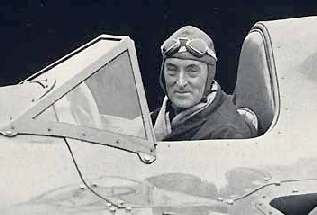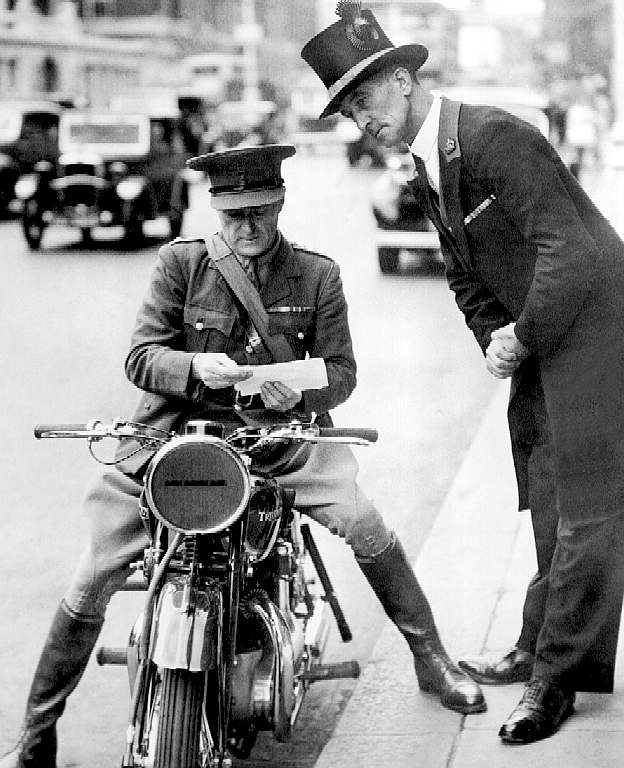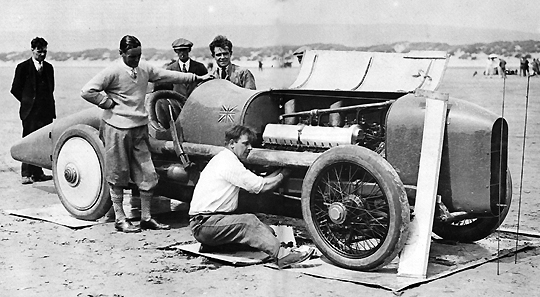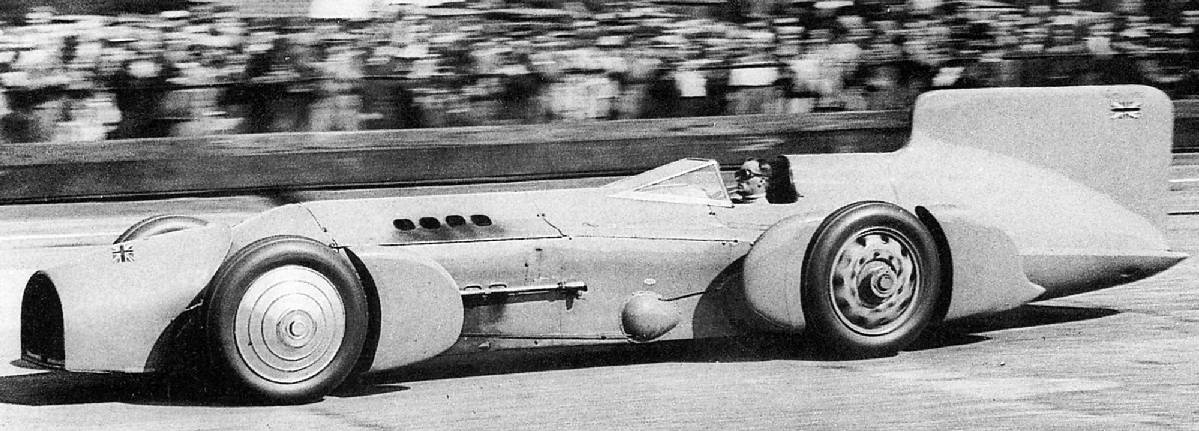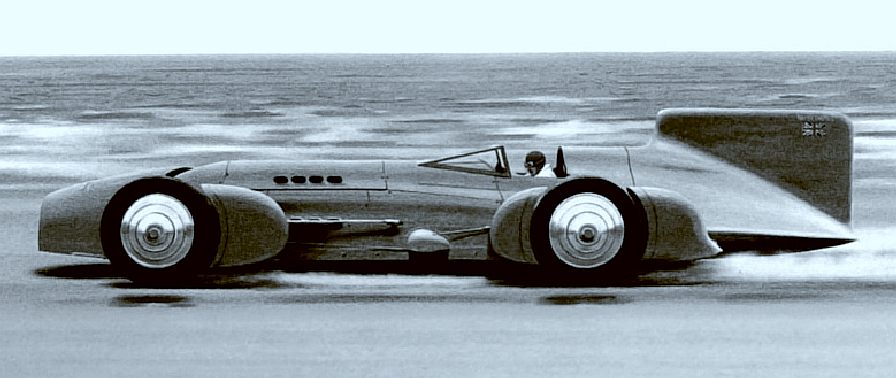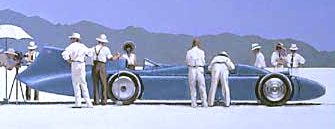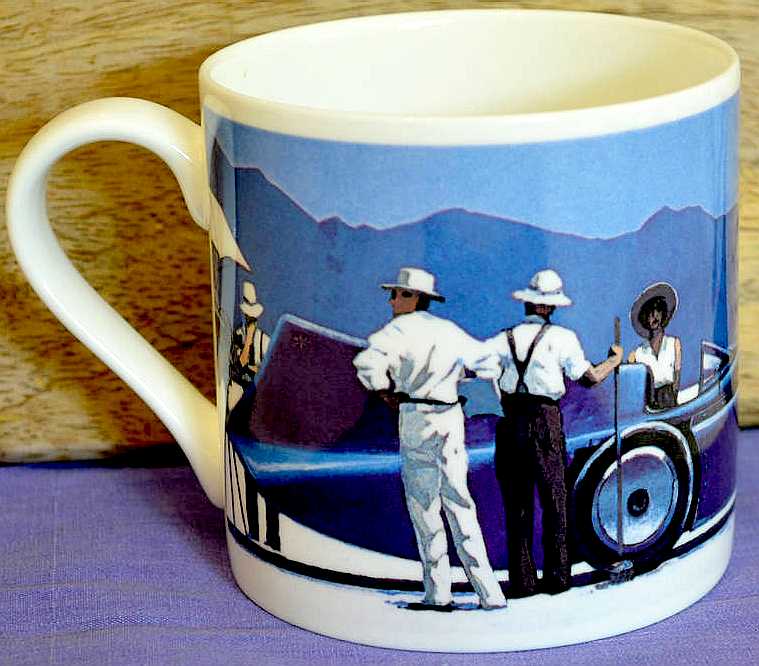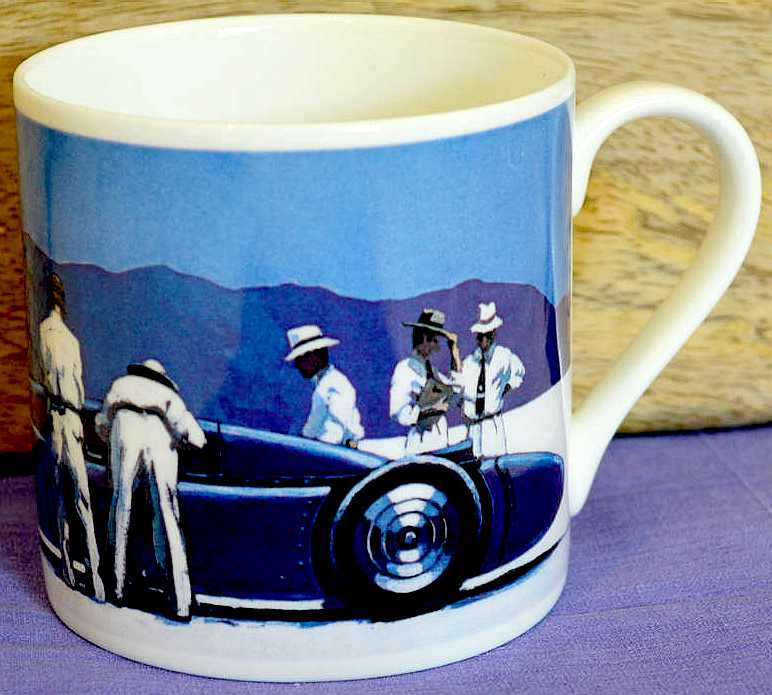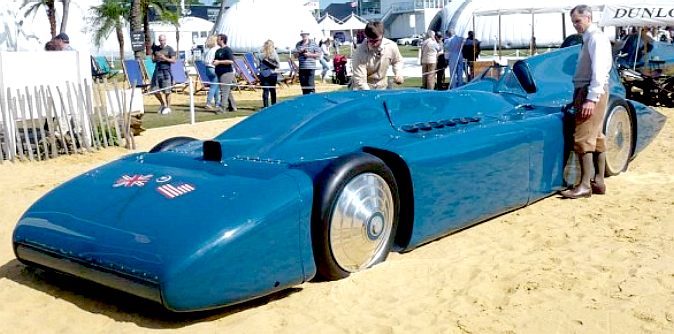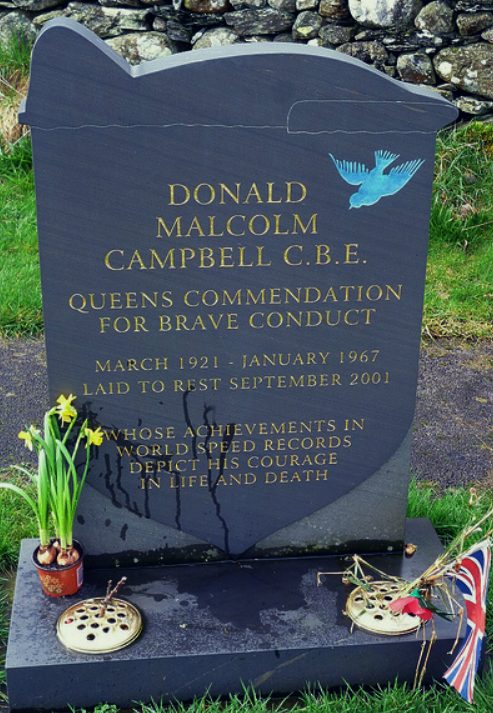|
SIR MALCOLM CAMPBELL
|
|
|
Sir Malcolm Campbell in his favourite car seat
Malcolm Campbell was a shareholder in Brooklands and very active in the running of the track, designing the Campbell road racing circuit within the confines of the site, which was used from its opening on 1st may 1937 to the outbreak of war. Throughout this period he was very active in all classes of racing at Brooklands driving a 1˝ litre Talbot, several Bugattis and the ex-Benoist straight eight supercharged G.P. Delage which was at the height of its fame in 1928 after numerous 1927 Grand Prix victories by its sister cars. In this car he dominated the 1928 200 Mile Race on 21st July, winning by 12 minutes and 12 seconds at an average speed of 78.34 m.p.h.
DIRECTIONS - Sir Malcolm Campbell asking for directions to Buckingham Palace. Sir Malcolm was also a keen sailor by way of cruising, apart from setting many water speed records along the way in his K3 and K4 racing craft.
For American auto racing, the Depression was a bleak period of little money and few races. But followers of the sport had something else to hold their attention - the continuing quest for the world land speed record. Some great names in American racing had held the record - Barney Oldfield, Ralph DePalma, Tommy Milton, even Henry Ford. But one man, an Englishman named Malcolm Campbell, seemed to capture the imagination of the entire world. It may have been the fact that he broke the record on nine occasions between 1924 and 1935, but more likely it was the design of his cars, all produced by Reid Railton, exotic and streamlined, and all named "Blue Bird." It was this combination that somehow provided the thrill of achievement giving hope for the future in a world turned upside down by economy catastrophe and the inevitable path toward another war.
Captain Malcolm Campbell with his Sunbeam at Pendine Sands
USA FIGHT BACK
With the record attempts moving to Daytona, US interest was aroused and with it
a desire to break the British domination. On 22nd April 1928 American Ray Keech
snatched the title in his triple-engined, 81 litre Triplex with an average of
207.553mph. With his ego damaged Campbell was determined to win back his crown.
However, his hopes were further dented when he heard that his old rival Henry
Segrave was designing an all-new car. On 11th March 1929 Seagrave's superb
'Golden Arrow' raised the record to 231.362mph. Campbell returned to the drawing
board and began work on yet another all-new Bluebird design. Fitted with a
1450bhp Napier engine and sleek new bodywork, the new car performed superbly and
on 5th February 1931 at Daytona Beach Campbell snatched back the record with a
new average of 246.088mph. Campbell returned to the UK a hero and was awarded a
knighthood by the King. At 46 years of age many expected him to retire at this
point.
The Napier Lion engined Railton Blue Bird putting on a show at Brooklands
Blue Bird at Daytona Beach in Florida, USA
NOSTALGIA - This beautiful car was inspired by Reid Railton and his designs for the Napier Lion and Rolls Royce engined Blue Bird LSR cars from the 1930s. The Blueplanet BE3 features the instant battery recharging using the patent Bluebird™ cartridge exchange system under license from BMS. This LSR is also solar assisted. She is designed for speeds in excess of 350mph using clean electricity. Picture if you will the spectacle of this streamliner dashing across the historic beaches at Daytona, Pendine, or the salt at Bonneville. In July of 2015 the Sunbeam Blue Bird that once belonged to Sir Malcolm was taken to Pendine Sands by the current owners, The National Motor Museum at Beaulieu. The media flocked to see the speed ace's grandson dress up for the cameras, to commemorate 90 years of cars on Pendine Sands. If there was sufficient interest the Blueplanet could take to the Sand for a high speed dash - once again seeing the Blue Bird legend in action on four wheels.
This Bluebird ran 301 mph at Bonneville Salt Flats in 1935 using a RR Merlin engine.
SOUVENIRS - You can now buy a mug with the famous painting of Sir Malcolm's Rolls-Royce Merlin engined LSR preserved in enamel.
Reid Railton proved to be a design genius, much like Ken and Louis Norris were for his son Donald. Without the skill of engineers like Railton land and water speed records could not be entertained. These days the cars could be drone controlled, when it would all come down to the engineering rather than the driver. Because of the superior designs of the day Sir Malcolm Campbell broke the speed record another nine times in various "Blue Bird" cars powered by both Napier and Rolls Royce engines. Reid Railton was largely responsible for these developments. The records were as follows :
25th September 1924 (Pendine Sands) 146.16 mph 21st July 1925 (Pendine Sands) - 150.766mph 4th February 1927 (Pendine Sands) - 174.88mph, 12th February 1928 (Daytona Beach, Florida) - 206.95mph, 5th February 1931 (Daytona Beach) - 246.09mph, 24th February 1932 (Daytona Beach) - 253.96mph, 22nd February 1933 (Daytona Beach) - 272.46mph, 7th March 1935 (Daytona Beach) - 276.71, 3rd September 1935 (Bonneville Salt Flats, Utah) - 301.12mph.
Sir Malcolm died after a long illness in 1949 after a stroke, and was succeeded by his son Donald who continued the record breaking tradition, breaking 400 m.p.h. in the turbine powered Bluebird CN7 now on loan in Lord Montagu’s National Motor Museum at Beaulieu. Donald in turn inspired many with his exploits. Sir Malcolm and Donald Campbell were world speed ace legends.
SIR MALCOLM CAMPBELL'S BLUE BIRDS
DONALD CAMPBELL'S BLUEBIRDS
Sir Malcolm Campbell's son Donald, crashed at Bonneville in the CN7 at over 300mph and survived. He finally died attempting the water speed record in the fated K7, joining Henry Segrave and John Cobb as victims of water speed record attempts. Donald Campbell's daughter Gina Campbell, also flipped her boat is similar fashion to her father but survived, wisely retiring in one piece. There ended the Campbell dynasty. Gina did not produce to carry forward the Campbell name.
|
|
|
This
website is Copyright © 2017 Bluebird Marine
Systems. The
names Bluebird™,
Blueplanet
BE3™ and the
blue bird in flight
|
|
